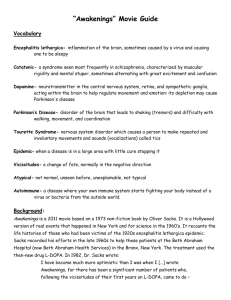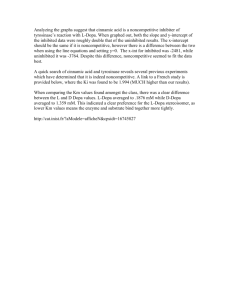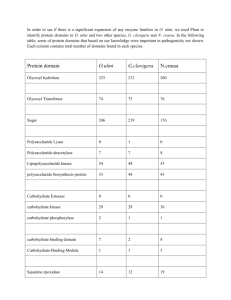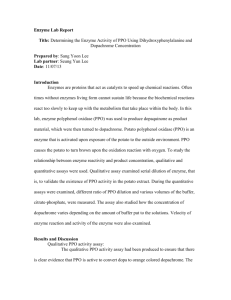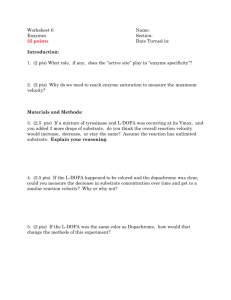Dopa Oxidase: Plant Enzyme Investigation Protocol
advertisement
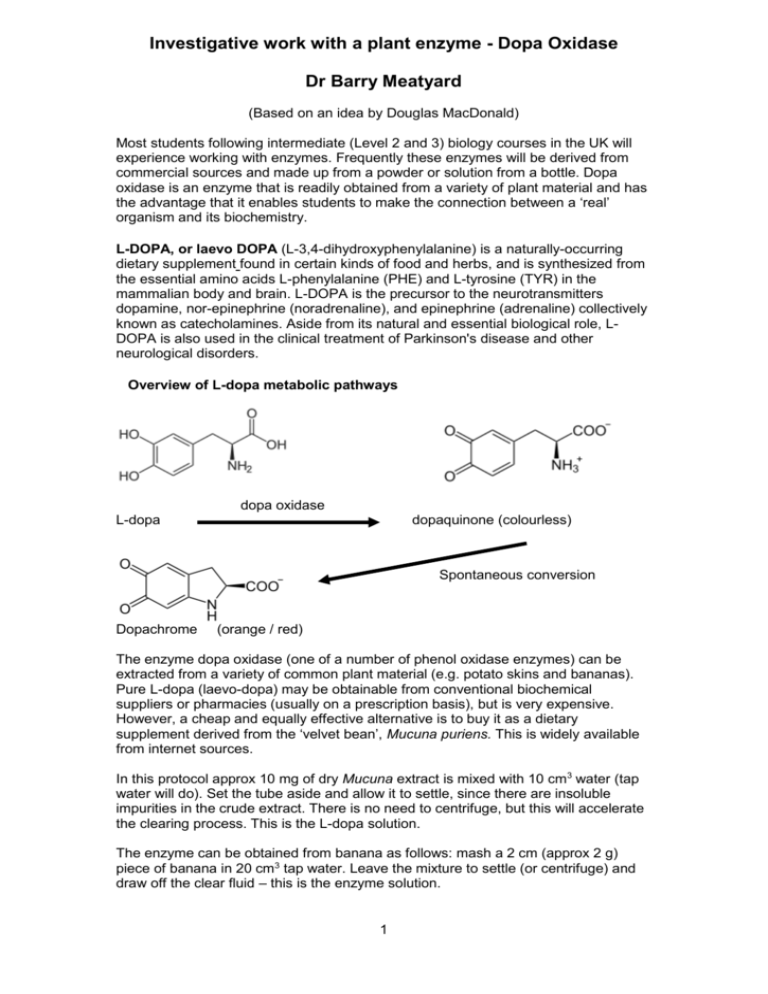
Investigative work with a plant enzyme - Dopa Oxidase Dr Barry Meatyard (Based on an idea by Douglas MacDonald) Most students following intermediate (Level 2 and 3) biology courses in the UK will experience working with enzymes. Frequently these enzymes will be derived from commercial sources and made up from a powder or solution from a bottle. Dopa oxidase is an enzyme that is readily obtained from a variety of plant material and has the advantage that it enables students to make the connection between a ‘real’ organism and its biochemistry. L-DOPA, or laevo DOPA (L-3,4-dihydroxyphenylalanine) is a naturally-occurring dietary supplement found in certain kinds of food and herbs, and is synthesized from the essential amino acids L-phenylalanine (PHE) and L-tyrosine (TYR) in the mammalian body and brain. L-DOPA is the precursor to the neurotransmitters dopamine, nor-epinephrine (noradrenaline), and epinephrine (adrenaline) collectively known as catecholamines. Aside from its natural and essential biological role, LDOPA is also used in the clinical treatment of Parkinson's disease and other neurological disorders. Overview of L-dopa metabolic pathways dopa oxidase L-dopa dopaquinone (colourless) Spontaneous conversion Dopachrome (orange / red) The enzyme dopa oxidase (one of a number of phenol oxidase enzymes) can be extracted from a variety of common plant material (e.g. potato skins and bananas). Pure L-dopa (laevo-dopa) may be obtainable from conventional biochemical suppliers or pharmacies (usually on a prescription basis), but is very expensive. However, a cheap and equally effective alternative is to buy it as a dietary supplement derived from the ‘velvet bean’, Mucuna puriens. This is widely available from internet sources. In this protocol approx 10 mg of dry Mucuna extract is mixed with 10 cm3 water (tap water will do). Set the tube aside and allow it to settle, since there are insoluble impurities in the crude extract. There is no need to centrifuge, but this will accelerate the clearing process. This is the L-dopa solution. The enzyme can be obtained from banana as follows: mash a 2 cm (approx 2 g) piece of banana in 20 cm3 tap water. Leave the mixture to settle (or centrifuge) and draw off the clear fluid – this is the enzyme solution. 1 The basic reaction mixture is as follows: Add 0.5 cm3 of enzyme solution to 1 cm3 of L-dopa solution. An orange/red colour, due to the appearance of dopachrome, will develop within a few minutes. Its intensity can be measured with a colorimeter using an orange/red filter. Fig.1 shows the colour change compared with 2 controls. A B C Fig. 1 The action of banana dopa-oxidase on L-dopa A = L-dopa + enzyme B = enzyme + water control C = L-dopa + water control Reaction time = 6 minutes The use of a colorimeter enables the kinetics of the reaction to be explored. Fig. 2 shows the typical graph of dopachrome production with time, as measured by the increasing intensity of colour produced. Fig.2 The conversion of L-dopa to dopachrome by banana dopa oxidase. The pH optimum for banana dopa oxidase is around 7.0 but the ease of extraction and preparation of enzyme an substrate, the low cost, and the reliability of getting 2 results within a few minutes, make this a system that could be used for a wide range of extended project work. Ideas might include: An investigation into heat stability – the enzyme could be heat treated at (say) 600C for 0, 10, 20, 30 etc min (up to one hour) and then assayed for activity at ‘normal’ (350C) temperature. Other related polyphenol oxidase enzymes are inhibited by borax. Is this true for dopa oxidase? What is the effect of varying the concentration of enzyme on the rate of reaction? What is the effect of varying the concentration of L-dopa substrate on the rate of reaction? Can you find other plant sources of dopa oxidase besides bananas and potato peel? Ref: MacDonald, Douglas, 2009. School Science Review 334. pp16-21 Barry Meatyard January 2011 bmconsultancy@tiscali.co.uk 3

